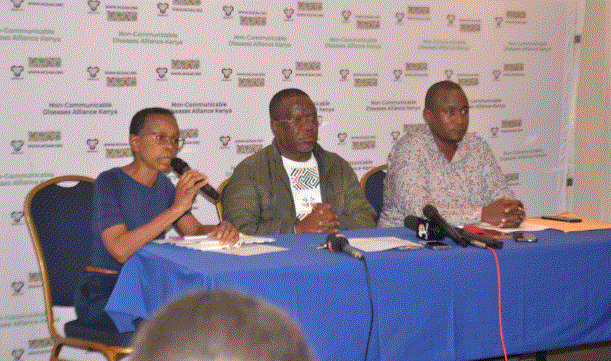November 5, 2024 – Nairobi , Kenya — When Kenya’s Social Health Authority (SHA) launched earlier this year, it was meant to transform healthcare access, especially for those battling chronic illnesses like cancer, diabetes, and cardiovascular disease. But for Mary Wanjiku, a 54-year-old grandmother from Meru, that promise has been clouded by distressing delays and mounting out-of-pocket costs. Wanjiku’s story is just one of many captured in a recent survey by the Caucus of Patient-Led Organizations of Non-Communicable Diseases (NCDs), revealing the SHA’s rollout has left thousands of Kenyans struggling to receive even the most essential care.

After her first SHA-covered visit to Kenyatta National Hospital, Wanjiku was left waiting for hours just to access diagnostic imaging once covered by the National Health Insurance Fund (NHIF). Like so many patients, she waited and hoped as system delays and technical failures dragged on, stretching her simple visit into a daylong ordeal. “I thought SHA would be better,” Wanjiku said, “but it seems the system is not ready for us.”
This sentiment echoes across Kenya’s healthcare landscape, from major hospitals in Nairobi to mission facilities in rural counties. The survey, conducted over two days in late October, highlights SHA’s stumbling blocks, which range from delayed services and inconsistent coverage to a lack of access to critical care for rural and underserved patients. Across public hospitals, it’s a story of patients enduring long waits as technical issues hinder basic service delivery, a situation that poses serious risks for individuals who cannot afford to wait.
“For patients facing conditions like heart disease, cancer, or other chronic illnesses, every delay can mean the difference between manageable symptoms and a crisis,” said Evans M. Majau, Chair of the Caucus of Patient-Led Organizations of NCDs. “Patients with non-communicable diseases simply can’t afford to keep waiting.”
While public hospitals are grappling with operational challenges, private facilities have restricted SHA coverage to specific groups—typically civil servants—leaving many patients forced to cover costs out of their own pockets. Patients with severe illnesses who don’t fit into narrow eligibility groups have been particularly hard-hit by SHA’s rollout limitations.
In rural areas, SHA’s limitations are even starker. Mission hospitals like Tenwek, which provide essential services to underserved populations, reported that they have no SHA coverage at all. Without this support, many rural patients face insurmountable costs if they need complex procedures, such as cardiac surgeries, that only select facilities in Kenya can perform.
The survey highlighted additional issues that have compounded these problems:
Out-of-pocket expenses for outpatient services and medication refills, previously covered under NHIF, now pose an added burden for NCD patients.
Unpaid NHIF bills and unclear SHA benefits have left hospitals hesitant to take SHA patients, fearing non-payment.
Suspended overseas treatment coverage has cut off options for patients needing specialized care not available in Kenya.
Low public awareness of SHA benefits has left many patients unprepared to navigate the new system, creating confusion and apprehension.
To address these issues, the Caucus of Patient-Led Organizations of NCDs has recommended an urgent set of reforms. They are calling on the Ministry of Health to reinstate overseas treatment coverage, clarify SHA benefit structures, and address system glitches that cause delays. The Caucus also emphasized the need for a national public awareness campaign to help patients understand and navigate SHA’s requirements.
“Transparency and accessibility are non-negotiable if SHA is to deliver universal health coverage,” Majau said. “Our patients deserve a system that works for them, one that doesn’t leave them trapped in a cycle of anxiety and financial strain.”
As patients like Wanjiku navigate these obstacles, they hope their voices won’t be lost. “I don’t want my grandchildren to go through this,” Wanjiku said, her voice filled with both hope and frustration. “I just want to be able to get the care I need without worrying if the system will work for me or if I’ll be left to fend for myself.”
The Caucus and other patient advocates believe that with decisive action and increased public engagement, SHA can be reshaped into a system that truly supports all Kenyans. Until then, however, patients like Wanjiku are left waiting, holding on to the hope that one day, healthcare in Kenya will live up to its promise.






